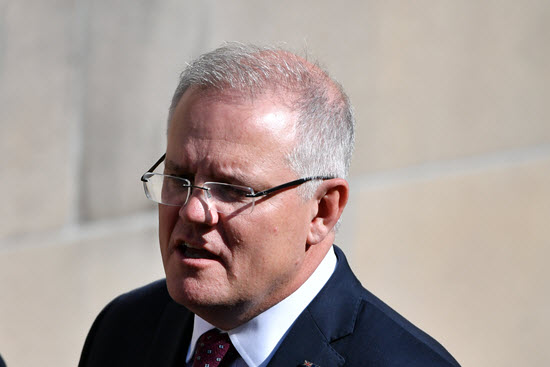
Here, stuck in the middle of this great disruption, it’s all but impossible to understand the political and social consequences of what we’re going through today.
After it’s all over, sure, we’ll all have — ahem — perfect 2020 hindsight. But now?
Most of us are too busy worrying about just how we’re going to get through the next few days, stocking up on hand sanitiser and toilet paper, filling up our freezers, worrying about at-risk parents, friends or ourselves.
But journalists need to be starting the hard work of sketching out a first draft of the history of this, our very own plague year to understand the breadth of the disruption and the impact it is having — and will have — on every aspect of our lives
Freely available statistical tools are turning everyone into amateur epidemiologists, confident the mathematical simplicity of a log chart can predict the future. This is even though, as Nate Silver warned, most governments are really reporting positive test results, not actual (and perhaps unmeasurable) cases.
In yesterday’s presser, Morrison gave some more broad numbers (over 100,000 tests, 0.7% positive, low hospitalisation or ICU rates) to stake a claim that algorithms are not destiny.
Governments are grappling for hopeful metaphors, starting to talk about “the bridge” they’re building to what Morrison repeatedly describes as the “other side”. When we can’t even see the bridge more than a step or two ahead at a time, it’s hard to be confident about what’s waiting for us at the end.
All these metaphors floating may infect our understanding of this moment, and will determine how the “other side” will be constructed.
As The New York Review of Books reminded us over the weekend, Susan Sontag wrote in 1978: “Any important disease, whose physical etiology is not understood, and for which treatment is ineffectual, tends to be awash in significance.
“Feelings about evil,” she said, “are projected onto a disease. And the disease (so enriched with meanings) is projected onto the world.”
From social media hashtags to government policy responses, all our concerns about globalisation from open borders to transnational supply chains — along with a fair dose of xenophobia — are being projected onto COVID-19. All-caps “SHUT IT DOWN!” gifs jostle in our newsfeed with news of one border clanging shut after another — first national, then local.
The personal risk assessment in the simple hedonism of an afternoon at the beach or drinks with friends has slipped quickly into the list of deadly sins, edged somewhere between lust and pride, demanding punishment and restraint from town scolds on Twitter.
This authoritarian and puritan impulse when faced with danger is not new.
We’ve had almost 20 years of governments using terrorism to justify a step by step tightening of their powers. Here in Australia, we’ve had about as long of the populist sloganeering: “We’ll decide who comes to this country and the manner in which they come.”
The power we give governments the social licence to seize during this pandemic will not be lightly surrendered on “the other side”. Industry will respond to this autarkic moment with restructured, less global supply chains, in everything from manufacturing to education and tourism.
Already the signs out of the two great powers of our age — the United States and China — are that the pandemic is accelerating a turning in on themselves. Authoritarians from Hungary to Israel, are already seizing the moment to entrench “emergency” powers and stifle democracy.
We’ve been here before, when the world similarly closed down a century ago through the combined impact of the Great War, the Spanish flu epidemic and the Red Scare. George Megalogenis’ 2015 book Australia’s Second Chance documented how damaging all this was for Australia.
If we cheer on the closing in of communities, allow it to harden into legislation and government practice and embed into social and economic structures, the Australia we will find when we step off this bridge will be very different to the one we thought we left just a few weeks ago.
It’ll be narrower, more isolated, more closed — more like the worst, not the best, of ourselves.








When we “step off the bridge” on “the otherside”, Australia will be a VERY different place.
How many will step off the bridge? Any particular age group? Any particular socio – economic group (apart from the wealthy who can buy a free pass)? Urban, rural?
What will be the results of the event, will people become less materialistic having got by with less? Will other attitudes to life and style alter? Will big business be more or less rapacious? A thousand and more questions with no answers.
If the attitude of the bulk of my fellow shoppers in the supermarkets last Saturday is anything to go by, it won’t be a pretty sight. Even in this largely rural area. Aggression, bad manners, anger and self interest was the order of the day. Same in the car park.
Scotty from Marketing may have been granted a miracle to get into Govt. I’ll bet Shorten, Tanya and Anthony think they were granted a bigger one.
A question we need to be discussing, yes.
Capitalism is very aware of the exploitability of crises generally, and it is very prepared and very quick to exploit them to its advantage and our cost. After all, it comprises the decision-making clique that is already doing so every day.
As promoter of rapacious capitalism Milton Friedman put it:
“only a crisis – actual or perceived – produces real change. When that crisis occurs, the actions that are taken depend on the ideas that are lying around. That, I believe is our basic function: to develop alternatives to existing policies, to keep them alive and available until the politically impossible becomes politically inevitable.”
Filthy rich can afford to spend their days plotting, not only because of their wealth, but also because they control both public and private appointments with which to reward their men (though women can be useful), while exploiting their power to ostracise and jail dissidents and whistleblowers.
Public provision of efficient but modestly-priced universal public services is being re-valued by this crisis. Households already enormously stressed by the fee-gouging of profit-seeker providers are suddenly deprived of the income required to keep a place in child-care, for instance. We need a return to the direct public provision of socially useful goods and services, with the good wages and permanent employment that goes with it.
Remember that pleasant person Mr Dutton has had his dose and his antibodies are riding high. His ambitions?
Aren’t things difficult enough without disinterring that dreadful fraud Sontag ?
Oh tell more markesmith… I’ve heard the name but am not familiar with any details They seemed like sensible words on the surface…
I would like to think that we would emerge from the coming train wreck a more caring, compassionate, egalitarian society but I am fearful that we will get a surge to the hard right wing. Think Hitler, Trump (not that he is necessarily hard right but many of his followers are, esp on social issues) Brazil. Philippines, Hungary , Poland, Italy.
People in pain might look for a strong man to solve their problems – only I can fix it! Come on down Peter Dutton.
I must say I really feel for those retirees who were going to be wiped out by Shorten’s “retiree tax” . They had spent years building up their share portfolio and absolutely needed their dividends to survive and now look at them. At least now their wealth and income will bu much reduced they might qualify for a part pension. Get into the queue at Centrelink
OH! WOW!
I had forgotten the “retiree tax” scare, it fades into insignificance now.